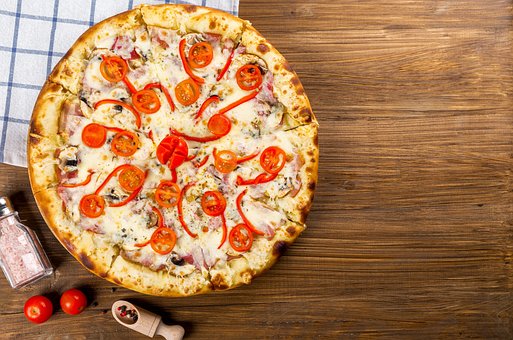 If you read my warm-ups over the weekend you noticed they dealt with the cost of making a pizza vs the price its sold for and the amount of mark-up. It's important to realize the numbers used may not be the same in your area. In Alaska, many things cost a bit more because they have to be shipped up here.
If you read my warm-ups over the weekend you noticed they dealt with the cost of making a pizza vs the price its sold for and the amount of mark-up. It's important to realize the numbers used may not be the same in your area. In Alaska, many things cost a bit more because they have to be shipped up here.There are other ways to include pizza into the math curriculum such as when looking at unit prices. One cannot compare a small pizza to a large pizza by price. Its much better to figure out the area of a 12 inch pizza vs a 16 inch pizza before calculating the cost per square inch. So in this exercise you've already calculated area and calculated the unit cost or cost per square inch, both real life math.
Rather than relying on the book for numbers, why not pop down to one or more pizza places, pick up menus with prices and use those. Students can compare establishments to see who has the best buy for the price. The comparisons should include places like Papa Murphy's which lets you bake the pizza and some of the ones only in your town. It is important to look at pizza's that are the same.
Furthermore, you can have students compare the area of one large pizza with the area of two small pizzas to see which situation is the best purchase. If you have one 16 inch pizza vs two 8 inch pizza's, one might assume they are the same but if you do the math 2 * 8^2 * 3.1415 you'd get 402.11 square inches vs 16^2*3.1415 or 804.22 square inches. So it would take four eight inch pizzas to equal the are of one 16 inch pizza.
There is also math involved in the slice itself due to Gauss's theory telling us how to calculate the object's curve. In other words, a flat surface can be curved one direction or the other but it must retain flatness which is why its hard to gift wrap a volleyball because the paper is unable to retain any flatness. He calculated the curve of a cylinder is zero meaning a piece of paper could be folded into a cylinder while the curve of a volleyball is nonzero because you cannot fold the paper into a sphere.
If you hold the pizza in your hand to eat, it is flat side to side and droops while you eat it because the "line of flatness" runs horizontally or across the pizza but if you fold it in the middle so the side meet in the middle, it becomes stiffer and easier to eat because the "line of flatness" runs vertically or from the edge to the middle.
This article goes even further to break down the cost of making a pizza from scratch. The author wrote the article in July 2018 and shopped at War-mart. Everything thing is broken down to exact amounts needed. The author calculated it would take $.22 cents for the 11 ounces of flour needed for the pizza dough. The yeast cost $0.44 based on buying three packets of yeast but the cost might be cheaper if she'd bought a bottle of yeast. Total cost of the dough ran to $.88 cents for two 12 inch pizza's.
The sauce, cheese, and sausage ran a total of $1.72 for one pizza or $3.44 for two pizzas. The author even discusses the cost of electricity which varies from location to location. I've lived in places where it runs $.34 per KWH which is much higher than most. The bottom line is a 12 inch pizza cost the person $2.36 to make at home rather than $16.00 at the pizza parlor. If you do not have a grocery store near you, calculations could be done using prices off of Amazon.
According to a Forbes article from 2017, pizza both standard and upscale version have the highest markup of any food served by restaurants. They even break down the cost of a meat pizza vs a Margarita (tomato, mozzarella, and basil) pizza. This gives students a perspective on mark-up.
Three ways to look at pizza mathematically and none involve fractions. Let me know what you think, I'd love to hear. Have a great day.
No comments:
Post a Comment